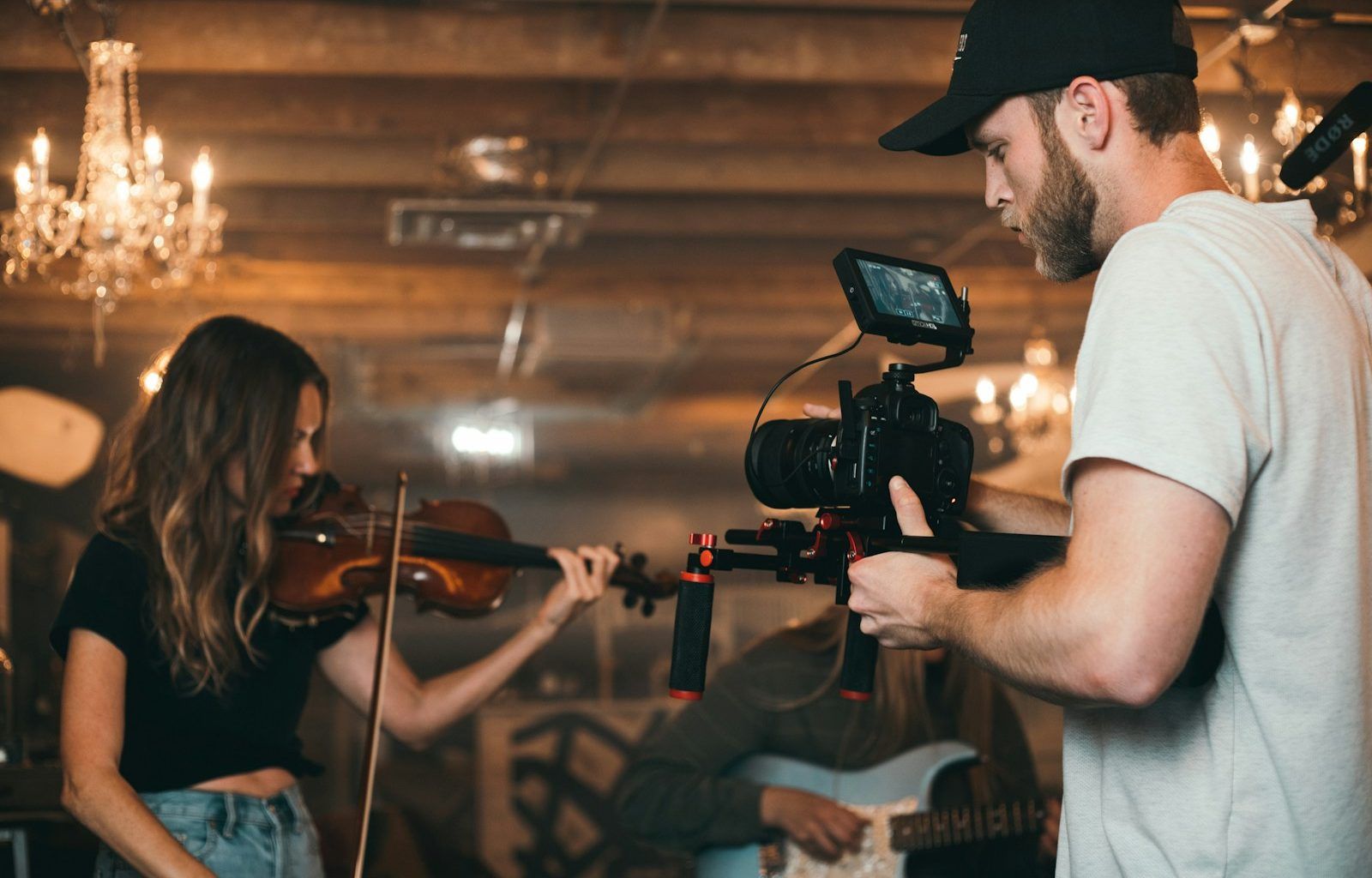Creating a music video is an exciting process that brings your song to life. But if you’re wondering how to make a good music video, the key lies in planning, creativity, and execution. A music video doesn’t just showcase your music; it tells a story, builds your brand, and connects with your audience on a visual level. Whether you’re an indie artist, a band, or a filmmaker, this guide will walk you through the steps to make a music video that stands out.
Understanding Your Song’s Vision
The first step to making a good music video is understanding the essence of your song. Ask yourself, “What is this song about?” and “What emotions does it convey?” Your music video should reflect the mood and story of your song. For example, if your song is upbeat and energetic, your video might include vibrant colors, fast-paced cuts, and dynamic visuals. If it’s a mellow ballad, a more cinematic or emotional approach may work better.
Take time to brainstorm ideas. Write down themes, visuals, or even a rough storyline that matches your song’s vibe. This will become the foundation of your music video.
Planning the Perfect Concept
A strong concept is the backbone of every good music video. Start by deciding what type of video you want to create. Will it be performance-based, narrative-driven, or abstract? Here are some examples:
- Performance Video: Showcase the artist or band performing the song, either on stage or in a creative setting.
- Storytelling Video: Tell a compelling story that aligns with the lyrics or mood of the song.
- Abstract Video: Focus on artistic visuals, experimental effects, or symbolic imagery.
Once you’ve chosen a concept, map out a storyboard. A storyboard doesn’t have to be overly detailed; it can simply outline the key scenes and transitions in your video. This will help you stay organized during the shoot.
Building Your Team
Even if you’re making a DIY music video, having the right people around can make a huge difference. A typical music video production team includes:
- Director: Oversees the creative direction.
- Cinematographer: Handles the camera and lighting setup.
- Editor: Puts the footage together in post-production.
- Cast and Crew: Actors, dancers, or extras, if needed.
If you’re working with a tight budget, you can wear multiple hats or enlist friends to help. Just make sure everyone involved understands the vision for the video.
Choosing the Right Location
Location is one of the most important aspects of a music video. The setting should enhance your concept and complement your song. Look for locations that are visually appealing and fit your storyline. For example:
- A rooftop for a city vibe.
- A forest for a mystical feel.
- A studio for controlled lighting and backdrops.
Before finalizing a location, consider permits, accessibility, and weather conditions. You don’t want surprises on the day of the shoot!
Selecting Props and Costumes
Props and costumes add personality to your music video. They help bring your concept to life and make the visuals more engaging. Think about what will look good on camera and match the tone of your song.
If your video has a vintage theme, consider using retro furniture, old-school outfits, or vintage cars. For a futuristic vibe, go for metallic colors, LED lighting, or sleek, modern props.
Preparing Your Shot List
A shot list is a detailed plan of every scene you want to capture. It helps you stay focused and ensures you don’t miss any important shots. Divide your video into sections and list the specific angles, movements, and actions for each part.
For example:
- Opening Scene: Close-up of the artist’s face, slow zoom out.
- Chorus: Wide-angle shot of the band performing, intercut with audience reactions.
- Ending: Fade-out with a silhouette against the sunset.
Having a shot list not only saves time but also makes the editing process smoother.
Shooting the Music Video
On shoot day, preparation is everything. Start early and give yourself enough time for multiple takes. Here are some tips for a successful shoot:
- Stick to the Plan: Follow your storyboard and shot list.
- Use Good Lighting: Lighting sets the mood and enhances the visuals. Experiment with natural light, studio lights, or creative setups like fairy lights or neon signs.
- Capture Extra Footage: Get additional shots, like close-ups or slow-motion clips, that can be used during editing.
Remember, the energy you bring to the set will reflect in the final product. Keep things positive and fun!
Editing: Where the Magic Happens
Editing is the stage where your footage comes together to create a cohesive story. Start by organizing your clips and syncing them with the music. Use software like Adobe Premiere Pro, Final Cut Pro, or free options like DaVinci Resolve.
Focus on pacing. A good music video flows seamlessly with the rhythm of the song. Use transitions, color grading, and effects to enhance the visuals. Avoid overloading the video with too many effects; sometimes, simplicity works best.
Promoting Your Music Video
Once your video is ready, it’s time to share it with the world. Post it on platforms like YouTube, Vimeo, or social media. Use Instagram, TikTok, and Twitter to tease clips and behind-the-scenes moments. Collaborate with influencers or bloggers to reach a wider audience.
Engage with viewers by responding to comments and sharing the video with fans. The more interactive you are, the more your video will resonate.
Final Thoughts
Making a good music video requires creativity, planning, and effort, but it’s incredibly rewarding. By focusing on your song’s vision, planning a strong concept, and collaborating with the right team, you can create a video that leaves a lasting impression.
With this guide, you’re well-equipped to start your journey. Remember, the best music videos are the ones that truly reflect the heart of the music. Go ahead, tell your story, and let your creativity shine!
For further reading, explore these related articles:
- Exploring the Magic of Martin Garrix Songs – Your Ultimate Guide
- The Ultimate Guide to Relaxing Songs: Discover Calm and Happiness Through Music
For additional resources on music marketing and distribution, visit DMT Records Pvt. Ltd.






